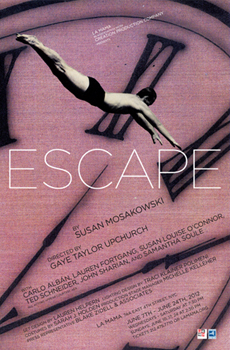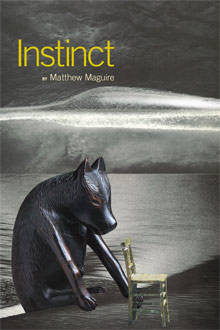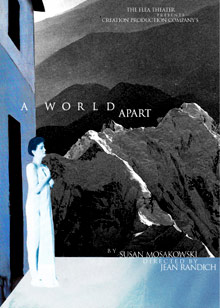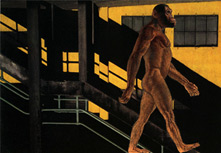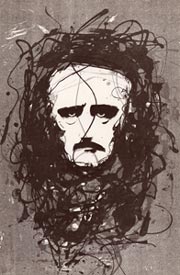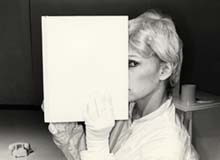The Memory Theatre of Giulio Camillo
1986
“Not on or below but actually within the Brooklyn Bridge,
a deftly imaginative exploration has been taking place . . . The scenes are
handled with such poise and are so vivid to behold that one begins to feel
the shards of a dispersed past trying to reassemble themselves.”
- The New York Times
Bernard Holland
“This beautiful, visually startling play about the perils
of forgetting covers the life and times of the now obscure Hermetic philosopher
Giulio Camillo (1480-1544) . . . While actual 16th century philosophers used
free association to fix the external, material world, Maguire’s Camillo is
moved to use it the way a post-Freudian does: to bring to consciousness what
a part of him already knows. The weaving of these two historical perspectives
is brilliantly accomplished.”
- The Village Voice
Laurie Stone
“The Memory Theatre of Giulio Camillo came to vivid theatrical
life as a deconstructed mystery play . . . Maguire’s Camillo pushes his “scientific”
demonstrations of memory beyond rational thought into an area of dreamlike
visions . . . with Vito Ricci’s compelling and evocative score played live.”
- Artforum
John Howell
“Vito Ricci hauls his synthesizers and string instruments
on a hotdog pushcart, accompanying the action with rich Gregorian punk.”
- The Village Voice
Alisa Solomon
“Maguire’s reconstruction of the theatre is blessed by his
extraordinary cast of four which includes Michael Ryan as the philosopher,
David Alton as Alessandro Citolini, Michele Elliman as Zerbinetta della Mirandolo,
and Karla Barker as Beatrice Ficino.”
- BBC/Arts Extra
Ann Sargent Wooster
“A dramatic antidote for historical amnesia … The Memory
Theatre is as much about repressing memory as memory itself … Maguire has
created a complex theatre. The vivid costumes, lighting, and Ricci's eerie
syntho-Gregorian music produce a near-hallucinatory effect on the spectator.
Seven unique sets (separately installed by five artists and four architects)
combine with the calculated staging of the actors and the architectural use
of the space itself to form a memorable visual language all its own.”
- The Guardian
Stacey Asip
“In the Anchorage’s main vault two wood beams thrust out
from opposing walls, forming an interrupted bridge . . . Designed by architects
Elizabeth Diller and Ricardo Scofidio, the structure cut through the space
with calculated precision, such that the room seemed on the verge of shattering.
Diller and Scofidio create in their work the sense of a suspended moment before
something snaps . . . Few other architects comment so accurately and tragically
on contemporary life.”
- Artforum
Patricia Phillips
“The Memory Theatre ingeniously exploits the special qualities
of the Anchorage . . . a shining example of theatre and architecture in aesthetic
partnership.”
- The Christian Science Monitor
David Sterritt
“Magical . . . enveloping . . . intriguing . . . disturbing
. . . dazzling . . . stunningly provocative.”
- St. Paul Pioneer Press Dispatch
David Hawley
The Memory Theatre of Giulio Camillo is one of the densest,
richest, most provocatively beautiful theatre events in my memory . . . A
counterpoint to Giulio’s increasingly illusionary “pure” memory system is
a troupe of commedia players, vulgar, brash, obscene, enacting scenes that
play on people’s greatest fears—embarrassment, oppression, castration, death.
The troupe’s central character, Pantalone, the absurd buffoon and object of
these feared actions, is played by the same actor who plays Giulio Camillo
and thus becomes his alter ego. Michael Ryan gives an amazingly forceful,
incisive, and penetrating performance in the dual role.”
- Minneapolis Star and Tribune
Mike Steele
“The Brooklyn Bridge has long inspired dreams and fantasies.
But for sheer exotic color and ambition, few of those dreams could match The
Memory Theatre of Giulio Camillo.”
- The New York Times
Jennifer Dunning
Winner of 1986 Bessie Award for the full ten-member New
York design team.
